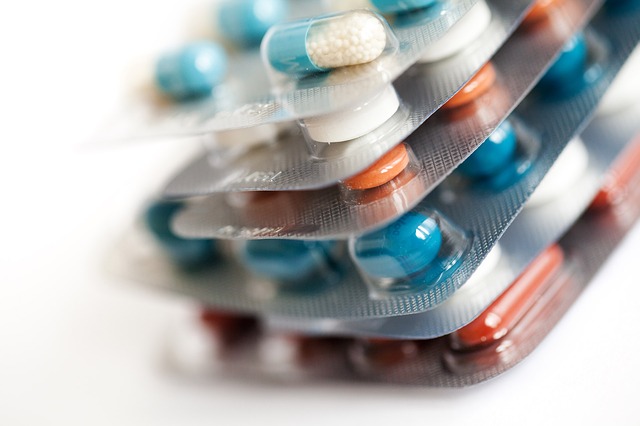Twenty-first-century populations have a lot more to worry about than previous generations. Big tech companies are exploiting our data. The Vu Quang bovid (alias Asian Bicorn) is going extinct. Justin Timberlake’s most recent album was a mess. Vine is gone. And don’t forget the imminent climate catastrophe! As if we already didn’t have enough running through our heads at night, there is one looming global threat that the general public gravely underestimates: the rise of antibiotic-resistant bacteria. In order to combat the impending disaster that would result from widespread antibiotic resistance, governments and policy leaders must implement a tax on antibiotics in the agricultural sphere and use the profits to invest in the development of new antimicrobials.
In 1928, Scottish biologist Alexander Fleming discovered penicillin, the first widely-administered antibiotic, which has since saved hundreds of millions of lives. Fleming’s discovery elevated him into the pantheon of modern medical idols, but he spoke of his success with a note of caution. In his 1945 Nobel lecture, Fleming warned: “The time may come when penicillin can be bought by anyone in the shops. There is the danger that the ignorant man may easily underdose himself and, by exposing his microbes to non-lethal quantities of the drug, make them resistant.” Fleming’s remarks were ultimately substantiated: The first penicillin-resistant bacteria appeared as early as 1942. Still, until recently, scientists have managed to discover enough new antibiotics to outpace bacterial resistance. But that’s about to change.
Unless scientists manage to slow accelerating rates of resistance, antibiotic-resistant “superbugs” are expected to take around 10 million lives globally by 2050, surpassing current cancer fatalities. In addition, the rise of superbugs would make chemotherapy, hip replacements, and other vital medical procedures too risky to undergo due to the risk of infection. Childbirth would, once again, become dangerous. According to former United Kingdom Prime Minister David Cameron, “If we fail to act, we are looking at an almost unthinkable scenario where antibiotics no longer work and we are cast back into the dark ages of medicine.”
Currently, many people are aware that medical over-prescription of antibiotics contributes to the development of antibiotic resistance. While this awareness is crucial, it is important to note that the far bigger threat comes from the agricultural sector. Antibiotics are widely and indiscriminately used to prevent farm animals from getting sick or to accelerate their growth. Because the drugs are administered at low levels, they are not strong enough to completely decimate any microbes that might take up residence inside of the animals. Instead, the presence of antibiotics gives any bug with an antibiotic-resistant gene a survival advantage, creating the ideal breeding ground for superbugs. This phenomenon is widespread: Nearly 80 percent of total antibiotics in the United States are administered to farm animals and global human consumption of antibiotics through meat was estimated at around 63,151 tons in 2010. Clearly, in order to reduce the threat posed by superbugs, governments must crack down on the overuse of antibiotics within the agricultural sector.
In the fight against antibiotic-resistant bugs, government support is critical since pharmaceutical companies have little incentive to develop antibiotics on their own. Because antibiotics are only taken for short periods of time, the return on antibiotics research and development is poor. Furthermore, because resistance develops fairly quickly, most new drugs are effective for only a short amount of time, which further decreases the potential profit. For these reasons, only two classes of antibiotics have entered the market in the last 50 years. This is absolutely pitiful compared to the golden years between 1940 and 1962, when 20 new classes of antibiotics were discovered. Now, nearly 60 years later, we are in desperate need of an antibiotic renaissance, and the government must take steps to initiate this rebirth.
In order to counter antibiotic resistance, governments should implement a 50 percent tax on antibiotics used in agriculture. This tax could reduce global consumption by up to 30 percent, and the generated revenue could be used to fund research to investigate new antimicrobials. This funding could also be used to develop more effective methods of diagnosing bacterial infections, which would decrease the rate at which antibiotics are administered.
Similar projects are already underway. Leading microbiologists have developed a technology that could radically improve the speed with which a doctor can test the properties of particular bacteria. This, in turn, would help ensure that doctors prescribe the right types of antibiotics, which would ultimately reduce rates of antimicrobial resistance. This new technology is essentially an aquatic trap that isolates individual bacterial cells; once the cells are trapped, it is easy to run tests on them to determine what kinds of antimicrobials will be most effective in treating them. This is a great improvement from the current treatment method, which involves growing and testing entire cultures at once. Given the fast-acting nature of bacterial illness, many doctors skip the identifying process altogether and merely prescribe broad-spectrum antibiotics, which contribute to the development of antibiotic resistance. Thus, by fostering the development and propagation of this technology, governments can slow the pace of antibiotic resistance.
Other groundbreaking research is happening outside of the discipline of microbiology: James Zou, an assistant professor of biomedical data science at Stanford University, is using artificial intelligence to build an algorithm that creates and tests virtual DNA. The algorithm, called Feedback GAN, actively refines the sequences it produces based on their similarity to antimicrobial proteins that already exist in nature. Ultimately, these sequences could be used to discover new antimicrobial proteins that could help fight against drug-resistant bugs.
Although antibiotic resistance poses a huge threat to human health, the future is not without hope. By embarking upon a joint process of research and regulation, governments can ward off the rise of the superbug and safeguard the existence of a balanced global microbiome.
Photo: Antibiotic Drugs
